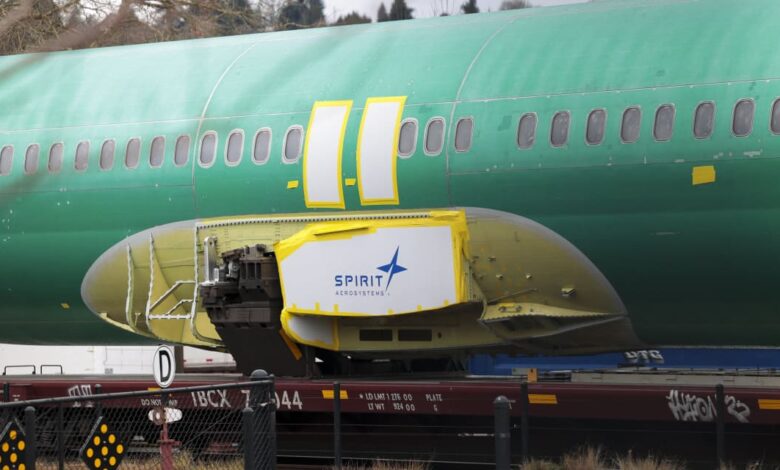
Boeing Co. late Friday confirmed talks about buying supplier Spirit AeroSystems Holdings Inc., saying such a move would “further strengthen aviation safety.”
Boeing
BA,
said it has been in “preliminary discussions” about making Spirit AeroSystems
SPR,
a part of the company again. Boeing sold assets that became Spirit AeroSystems in 2005.
“We believe that the reintegration of Boeing and Spirit AeroSystems’ manufacturing operations would further strengthen aviation safety, improve quality and serve the interests of our customers, employees, and shareholders,” the aerospace and defense company said.
Shares of both Boeing and Spirit AeroSystems gained in the extended session Friday. Spirit AeroSystems shares ended the regular trading day up 15%, while Boeing shares closed nearly 2% lower.
“Although there can be no assurance that we will be able to reach an agreement, we are committed to finding ways to continue to improve the safety and quality of the airplanes on which millions of people depend each and every day,” Boeing said.
Spirit AeroSystems issued its own, similar statement shortly after, adding it does not intend to comment further.
The Wall Street Journal reported the talks earlier Friday. Spirit AeroSystems, which makes fuselages and other plane components for Boeing, is at the center of several recent quality problems confronting the aerospace and defense company.
Investors will want to know whether this acquisition would solve the quality issues at Boeing, but the short answer to that question is no, at least not in the near term, Ken Herbert of RBC Securities said in a note Friday.
Broadly speaking, the aerospace industry is trending toward more vertical integration after several years of outsourcing, Herbert said. But news that Boeing is pursuing Spirit AeroSystems came as a surprise, he said.
“We do not believe acquiring [Spirit AeroSystems] represents a near-term fix” for Boeing and the concerns about its 737 Max airplanes, Herbert said. Moreover, a purchase would add to Boeing’s near-term execution issues, even though Spirit was once part of the aerospace and defense giant, he said.
On the flip side, there are potential long-term benefits for Boeing from “greater integration around tooling, supplier management, production best practices, and execution, among other factors,” he said.
Spirit AeroSystems made the fuselage involved in the mid-air blowout of a panel on an Alaska Airlines plane last month.
A preliminary report earlier this month found that bolts were missing on that plane. Aviation regulators this week gave Boeing 90 days to come up with plan to improve safety and quality problems.
Last year, Boeing and Spirit disclosed problems involving the 737 Max jets that had slowed production.
Sheila Kahyaoglu, an analyst at Jefferies, said in a note Friday that a potential acquisition would be dilutive to Boeing’s free cash flow, to the tune of 3.6%, or $297 million, to Jefferies’ 2025 cash flow estimates of $8.2 billion.
Assuming Spirit assets connected with France’s Airbus SE
AIR,
are sold, the deal would not impact Boeing’s top line, Kahyaoglu said. According to an earlier Wall Street Journal report, Spirit AeroSystems is also exploring the sale of its Ireland operations that support Airbus production. Those represent less than one-third of Spirit’s sales, the analyst said.
Citi analyst Jason Gursky estimated that Boeing ended last year with about $22 billion in liquidity but said that if a deal were to happen, an all-stock transaction likely would make “the most sense as the success of both companies is and will remain closely tied.”
Gursky kept his buy ratings on both Boeing and Spirit AeroSystems shares, saying “efforts to improve operations should lead to improved earnings visibility for shareholders.”
In the last 12 months, shares of Boeing have fallen 1.8% and shares of Spirit AeroSystems have dropped 4.5%. That contrasts with gains of around 30% for the S&P 500
SPX
in the same time frame.
Source link






